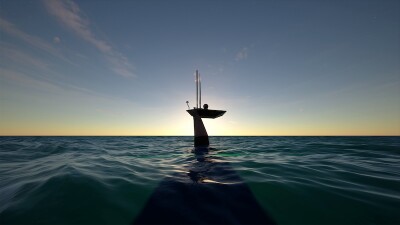Training an emerging offshore wind workforce just got a boost with completion of a crew transfer training facility at the Massachusetts Maritime Academy (MMA).
Construction of the facility on the Cape Cod school’s campus in Buzzards Bay, which was funded partly by grant from the state-run Massachusetts Clean Energy Center, was finished last week. Modeled after offshore wind turbines, the training tower is located at the far end of a waterfront protection pier inaugurated last year that also provides docking for local safety vessels.
The project is part of a broader plan by Massachusetts to establish a network of training programs that prepare workers for Vineyard Wind, a major wind farm project planned south of Martha’s Vineyard, and to fulfill the ambition of Gov. Charlie Baker to make Massachusetts the focal point for the growing wind power industry in the United States.
MMA hopes to be the first institution on the East Coast, if not the country, to offer all five modules of training courses developed by the Denmark-based Global Wind Organization (GWO), which sets international standards for worker training in the offshore wind sector.
MMA will use a Carolina Skiff boat that has been modified so it can be operated like the crew transfer vessels that are being built specifically for offshore wind construction, said Capt. Michael Burns, director of the Center for Maritime and Professional Training. The vessel will be used to train workers to maneuver up to a turbine’s monopile and transfer personnel from the boat to the tower. “There are a few others doing onshore training, but no one in the Northeast is doing this training and no one is offering the sea survival component,” Burns said.
He said the school also plans to build a facility that trains workers to perform tasks safely at high heights.
Offshore wind training is a new direction for the maritime school, but it falls in line with the academy’s existing maritime health and safety orientation and academic focus, Burns said. “We started to look into this in 2011 during the days of the Cape Wind project,” which eventually did not go forward. “When we learned about Vineyard Wind and other lease areas, we started to look at the training that would be needed (for the industry) and partnered with (other state schools). We saw a lot of overlap with the staff that we already had, and with our training in other maritime areas.”
The academy has hired RelyOn Nutec, one of the largest providers of GWO training in the world that is headquartered in Denmark with an office in Houston, to develop a curriculum.
Instructors will be a combination of existing academy staff and outside experts in areas like firefighting and working at heights, Burns said.
Courses are targeted for those getting ready to work in the construction and operation and maintenance of offshore wind farms and for those doing survey and other related offshore jobs. It will be a non-credit, professional development program operated in conjunction with companies involved in offshore wind projects, he said. Course fees will be paid by the companies. Once a worker has completed the course, his certification will be logged into GMO’s global database so that an employer can verify training.
MMA hopes to have instructor training completed by early November, and begin offering courses by the end of this year.
As the industry and the offshore job market matures, MMA plans to make offshore training courses available to academy cadets as well. “They are aware and we’re hoping to do outreach training to introduce people to the industry,” he said, adding that some cadets have attended career fairs for offshore wind and industry officials have come to campus to discuss job opportunities.
Offshore wind is expected to generate many jobs going forward. The U.S. Department of Energy estimates that 43,000 new jobs will be created in the offshore wind market by 2030. According to a study assessing jobs and economic impacts associated with development of 1,600 megawatts of offshore wind in Massachusetts, the industry will create nearly 3,000 jobs and generate economic impacts between $1.2 billion and $2.1 billion in the region.





